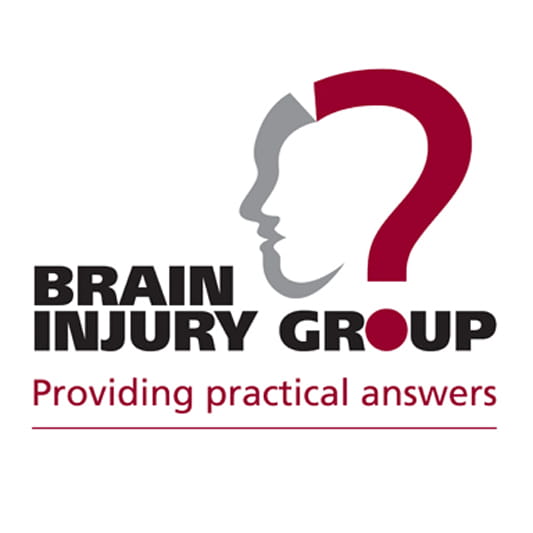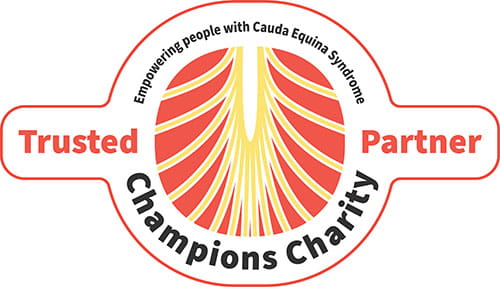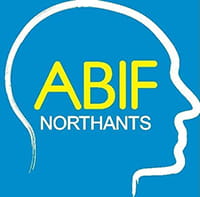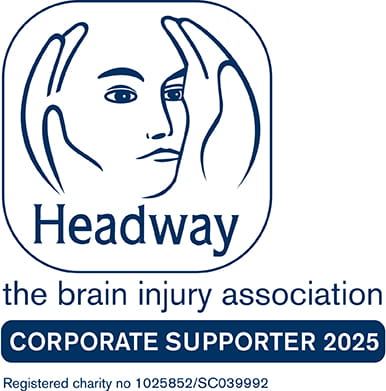However, our ability to use our hands is dependent on having fully functional arms. The shoulder, elbow and wrist are required to help place the hands in the required position to carry out any given task and, along with the hand, form the upper limb.
The upper limb is perhaps the single most versatile and functional part of the body. Our hands and arms not only form a key aspect of a person’s self-image they are also of fundamental importance in carrying out all the tasks we need to do. Anyone who doubts that should try spending a ‘normal’ day with their arms tied behind their back.
The challenge in designing an upper limb prosthesis is to provide a device that not only looks right but also does everything our natural arms can do, including all the sensitivities to touch, pressure, heat and weight that our hands and arms provide. Replicating our upper limbs with prosthetics is a supremely difficult and complex goal. There have been tremendous advances in technology and whilst we aren’t there yet, we are getting very close.
This guide to upper limb prosthetics is here to help if you or a loved one has experienced a life-changing injury. As expert lawyers in clinical negligence and personal injury, we’re here to help you get the compensation you need to adjust to your new way of living and to offer expert support and guidance to get your life back on track.
What is upper-limb amputation?
Upper-limb amputation is the removal of any part of the forearm or arm. The amputation level will be determined by a doctor prior to the operation.
The term amputation level is used to describe the location of the body part to be amputated.
Why are upper-limb amputations carried out?
Upper-limb amputations are carried out for a number of reasons, including trauma following an accident, delay in treatment, or infection. Some amputations are ‘elective’, where patients choose to have an amputation to avoid future problems.
Find out more about the common causes of amputation.
Here at Shoosmiths, we’re not afraid to tackle complex amputation cases, which is just what we did for our client who suffered life-changing injuries following a hit and run. Read how we were able to secure a settlement despite the complex liability investigation.
What are the types of upper-limb amputation?
There are a number of different types of upper limb amputation, and each one will have an impact on the type of upper limb prosthesis required.
Metacarpal amputation
Metacarpal (finger or hand) amputations range from a proximal phalanges amputation (top of the digit), full digit removal, to metacarpal amputations that include the bones of the hand.
Often there is a difficulty in fitting a prosthesis with a metacarpal amputation, and cosmetic silicone prosthetics are sometimes used.
Wrist disarticulation
The hand is removed from the radius, requiring a prosthesis with a socket that contains the residual limb, and a terminal device. There are a wide range of devices from passive prostheses (with no movement) to body-powered and electrically powered prostheses.
Transradial amputation
Amputation occurs through the radius and ulna of the lower arm below the elbow. A prosthesis for a transradial amputation consists of a socket that contains the residual limb, prosthetic wrist and a terminal device.
Elbow disarticulation
The lower part of the arm is separated from the elbow joint and removed. A prosthetic limb will include an elbow joint, wrist, and terminal device.
Transhumeral amputation
The humerus bone is the upper arm bone, and a transhumeral amputation is often known as an ‘above the elbow’ amputation.
Shoulder disarticulation
The upper arm bone is removed from the insertion point at the shoulder joint (the clavicle and scapula). An upper limb prosthesis will include a shoulder joint, elbow joint, wrist joint, and terminal device.
Forequarter (or Intrascapular Thoracic) amputation
The upper arm, scapula and clavicle are all removed. An upper limb prosthesis for a forequarter amputation consists of an upper portion of the trunk, including the ribs, a shoulder joint, elbow and wrist joint, and terminal device.
What types of upper-limb prosthetic devices are available?
Huge technological and surgical advances in the last few years have enabled the development of prosthetic limbs that not only look like natural fingers, hands and arms but also mirror natural movement and functionality so closely that the user needs less and less training to use the prosthesis.
This is because, although the microprocessor technology inside the prosthesis is more complex than ever, modern artificial limbs move and are controlled in ways that mimic natural movement, reducing the amount of training required to operate them.
Modern, advanced prostheses are made up of a number of different parts:
- Mechanical (how the prosthesis attaches to the amputee)
- Control (how the amputee communicates with the device to make it move)
1. Mechanical
The traditional socket, often requiring a harness, is still the most common. In recent years, osseointegration has been developed which opens up a whole new way of attaching the prosthesis to the residual limb/body.
Traditional socket: Upper limb prosthetic devices have traditionally been attached to the residual limb by way of a socket and strapping system. The prosthesis has a socket at the end, like a cup that fits the residual limb. The socket is then often held in place using a harness to ensure it stays in place.
The benefit of this system is that it does not require further surgery to attach the prosthesis and it is fairly simple and cost-effective. The functionality of the prosthesis will depend on how well the socket is attached to the residual limb.
This can be a problem. If the socket is too loose, the prosthesis will not function properly; if the socket is too tight it can cause significant damage to the residual limb. The residual limb will change shape over time and under different conditions, so ensuring a good socket fit requires ongoing review.
Another disadvantage of this type of attachment mechanism is that it is dependent upon there being sufficient residual limb around which the socket can bind. Amputees who have lost their arm at the shoulder for example (disarticulation) or where the above the elbow amputation (transhumeral) occurs near the shoulder, there may not be enough residual bone to make a socket prosthesis viable.
Osseointegration
Osseointegration is a pioneering technique that is changing the landscape for upper limb amputees. Osseointegration is the process of inserting a titanium rod (bone anchor) into the residual limb and then attaching the prosthesis directly to the bone anchor. The natural bone grows around the anchor, creating a strong and stable connection for the prosthesis.
This process is vastly improving the attachment of the prosthesis to the amputee, allowing for much greater control as well as making prosthesis available to amputees who may not be suitable for socket prosthetics, for instance, because there is an insufficient residual limb.
Find out more about this cutting-edge technology from world-renowned Consultant Prosthetist, Abdo Haidar.
2. Control
Control of upper limb prosthetics is achieved by two principal methods and operating technologies:
- Body power cables
- Myoelectric prosthetic limbs
Body power cables
Body-powered cables are a basic form of control mechanism for many types of upper limb prostheses. Natural arms work by the flexion and extension of muscles and tendons to move the arm, hand and fingers. Body-powered prosthetic arms and hands move in much the same way: the arms are connected using cables to another part of your natural body – the opposite shoulder for instance. With sufficient training and practice, an amputee can learn to move the prosthesis in various ways using this cable system.
Myoelectric Prosthetic Limbs
Myoelectric prosthetic limbs are the future in terms of control mechanisms. The prosthesis interprets signals from the amputee’s nervous system via the residual limb and converts these signals into movements, much in the same way a natural arm works. By using surgical techniques like Targeted Muscle Reinnervation (moving nerves from other parts of the body to specific points on the residual limb) the amputee can use their brain to operate the prosthetic.
Surgeons and prosthetists are working together to create surgical techniques and prostheses which allow the amputee not only to control the prosthesis with their mind but to also receive sensory feedback from the prosthesis: in other words, to feel what it is the prosthetic is touching.
Myoelectric prosthetics have a number of advantages over body-powered prosthetics. Since they use a battery and electronic motors to function, the myoelectric artificial limb does not require any unwieldy straps or harnesses.
It is usually custom made to fit and attach to the remaining limb (whether above the elbow or below). Once it is attached, the prosthetic uses electronic sensors to detect minute muscle, nerve, and EMG activity. It then translates this muscle activity into information that its electric motors use to control the artificial limb’s movements. The end result is that the artificial limb moves like a natural limb.
However, the primary disadvantage of this kind of upper limb prosthetic is weight. The myoelectric artificial limb contains a heavy battery and motor inside, and unlike the body-powered prosthetic, it does not use any harnesses to counter-balance the weight across the body.
The other disadvantage of myoelectric prosthetic limbs is cost. This technology is considerably more expensive than other kinds of prosthetics, but it does offer the best quality in both cosmetic appearance and functionality. Similar to the problem of weight, it is likely that the cost will eventually reduce as the technology becomes cheaper. One such driver in cutting cost may well be developments in much cheaper, quickly customisable 3D printed upper limb prosthetics, made mainly from ABS plastic.
How to choose an upper limb prosthetic?
Because the function of the upper limb is far more difficult to replace than that of the lower extremities, choosing the right upper limb prosthetic is vital. The primary functions of the upper limb include not only gross and fine motor activities but also far more complex activities and functions. Upper limbs are necessary for self-care, interaction with the environment and other people, as well as communication.
The complexity of the upper limb often results in many people with an upper limb prosthetic being less satisfied with the restoration of function provided by their prosthesis when compared with those who have a lower limb prosthetic. However, when choosing an upper limb prosthetic there are a number of factors that should be considered. Ultimately, every amputee is different and their individual needs will dictate which prosthesis is right for them:
- The level of amputation (loss of finger, partial hand, hand below the wrist, transradial, transhumeral, whole arm / shoulder disarticulation)
- The tasks which the amputee wishes to focus on / the functionality required
- Price (the most advanced prostheses are also the most expensive)
Most prosthetic fittings can begin around 14 days after surgery and ideally will be carried out within 30 days of the surgery. When choosing an upper-limb prosthesis, there are three main things to consider:
- Comfort: This is the top priority when choosing a prosthesis.
- Function: This is linked to what the individual wants to be able to do. From everyday activities like cleaning and cooking to any hobbies like swimming or archery, understanding what functions you want the prosthesis to help with will inform the type of upper limb prosthesis required.
- Aesthetics: The look of the prosthetic itself can have a massive impact on the overall rehabilitation and acceptance of using it.
Passive prosthetics
Passive prosthetics are the best option for people who need a functional upper limb prosthesis that also looks lifelike.
Body-powered prosthetics
Typically operated by a combination of a body harness and upper-body muscles, body-powered prosthetics provide the wearer with feedback via the amount of pressure.
Externally powered (myoelectric) prosthetics
Amplify EMG signals from muscles to allow the user to control the wrist or hand. Newer / more technically advanced models use pre-programmed grasps and pattern recognition, allowing myoelectric prosthetics to execute more complex tasks.
Hybrid prosthetics
Combining body power and myoelectric control, hybrid prosthetics give the user the ability to control grip strength and movement, whilst providing bio-feedback.
Activity-specific prosthetics
From fishing to swimming, there are a number of activity-specific prosthetics available with activity-specific attachments. Activity-specific prosthetics are available as a single piece or as an attachment for existing prosthetics.
Read more about the design of prosthetics and how to choose the right one.
How is cosmesis changing upper-limb prosthetics?
Cosmesis is the art of making prosthetic limbs look lifelike. Alongside providing the functionality of an upper limb, cosmesis is also giving people their confidence back. We know that limb amputation can lead to negative self-image and many amputees can experience feelings of social discomfort and can even become depressed. It’s not just amputation that cosmesis is having a positive impact. For people who’ve endured life-changing scaring and disfigurement, this advancing technology is being used. This is just what happened with our client Tom Jones.
Discover how we helped restore Tom’s quality of life. We referred him to The London Prosthetic Centre which specialises in prosthetics and cosmesis.
The appearance of a prosthetic limb is important to amputees as it can have a positive impact on the acceptance of the prosthesis. Prosthetics, especially upper limbs, are often available with high-quality silicone covers that disguise scar tissue and mimic natural skin. Matched to an individual’s specific skin colour and texture, the cosmesis incorporates skin pigmentation, freckles, veins and hairs to produce an authentic and personalised finish.
How much does an upper-limb prosthesis cost?
Upper limb prosthetics can cost thousands of pounds, with more specialist limbs costing upwards of tens of thousands of pounds. The cost is not just limited to the limb itself, but to the assessments, the fittings, the manufacturing and the physiotherapy before and after the fitting of the limb. All of which can add up, which is why if you or a loved one have been left with life-altering injuries, seeking compensation can help pay for the prosthetic and its associated costs.
The life span of a prosthetic limb is usually five years and the cost of multiple limbs, including activity-specific ones, over the course of a lifetime can cost in excess of hundreds of thousands of pounds. This cost estimate is often the largest individual element of a claim.
Pre and post-op physiotherapy for upper-limb amputation
Physiotherapy plays a vital role in the success and comfort of living with an upper limb prosthetic following an amputation. If the amputation is a non-emergency amputation, pre-op physiotherapy is suggested.
Pre-op physiotherapy can provide a patient with:
- Exercises to help maintain current muscle strength and range of movement
- Information and advice on what to expect post-surgery regarding rehabilitation
Post-op physiotherapy can provide a patient with:
- Pain relief through targeted massage. This can also help with the healing process and relieve tension in the surrounding muscles
- Alternative therapies, including acupuncture and electrical stimulation, to help with the treatment and potential prevention of phantom limb pain
- Exercises to help encourage mobility, increase strength and reduce stiffness
Physiotherapists will also teach patients how to don (put on) and doff (take off) a prosthetic.
Physiotherapy, rehabilitation and occupational therapy are not only costly but can be a lifelong commitment. Compensation following a personal injury or as a result of medical negligence can help alleviate the burden of this extra cost.
Upper-limb prosthetics maintenance
Regular maintenance of an upper-limb prosthetic will not only extend its lifespan but will also ensure that it is comfortable and fit for purpose. Because upper-limb prosthetics are comprised of a number of components, they require regular maintenance.
You should regularly check for signs of wear and tear – but it’s important to remember that you should never adjust screws, bolts, hinges or other parts yourself.
When being fitted with your upper limb, you will be given specific information on how to care for your prosthetic, however daily cleaning of the interior of the socket is required to prevent bacteria build-up which could cause infection to the stump.
Preparing for an upper-limb amputation
Depending on the cause of the amputation, patients are examined several times before surgery. During the consultations, everything will be explained in detail, from what will happen during the operation to aftercare advice.
Patients are encouraged to not only speak with their surgeons before their amputation but to seek psychological support. An amputation is a life-altering surgery, and counselling pre- and post-op can help with coming to terms with the whole process. Patients should also speak to healthcare professionals about support groups for amputees, as it can be an isolating experience.
It’s also recommended that patients start targeted rehab exercises prior to the amputation to help with post-op recovery.
Understanding the process and options ahead of the procedure can be massively beneficial to physical, emotional, and social wellbeing.
After an upper-limb amputation
Following the amputation, there will be a hospital stay of around 14-21 days, but the duration of the hospital stay is dictated by how the body heals and the type of amputation carried out.
The focus for any post-op surgery is patient recovery and healing of the residual limb. The recovery phase is an important first step in the rehabilitation process, which will include the fitting of the upper-limb prosthesis.
There will be a post-amputation assessment, where the residual limb is assessed. Before prosthetics can be fitted and worn, the stump must be fully healed. The skin around the amputation site should be kept clean and dry.
How can Shoosmiths help?
We know that losing a limb, regardless of the circumstances surrounding the amputation, can have a life-altering impact, especially if the amputation was caused as a result of the negligence of another.
It’s why our specialist team of amputation claims solicitors are waiting to hear from you. In our free no-obligation chat, we’ll discuss how we can help you get the compensation you need to adjust to your new circumstances.
Our legal experts have the experience and understanding to provide you with the holistic support and impartial advice you need to help you rebuild your life.
Call us on 0370 086 8686 or send us a message today to talk in confidence.
For more information about amputation and the organisations out there who can help, visit the NHS amputation page.
Disclaimer
This information is for educational purposes only and does not constitute legal advice. It is recommended that specific professional advice is sought before acting on any of the information given. © Shoosmiths LLP 2025

















